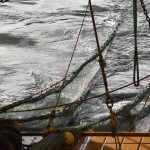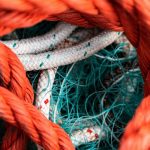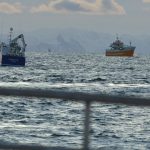Commissioner for the Environment Stavros Dimas said: “Seas and oceans are an important source of life on our planet. They play a strategic role in sustaining climate and weather patterns, distributing solar energy, and absorbing carbon. Yet, they have been neglected for too long. Their protection is essential for the future of our planet.”
Protecting the marine environment
The European Union is strongly committed to the protection of oceans and seas. In 2008 the European Union adopted a thematic strategy for the protection and conservation of the marine environment which included a Marine Strategy Framework Directive. The aim of the directive is to ensure that all EU marine waters are environmentally-healthy by 2020. To facilitate implementation of this new Directive, the Commission is fostering collective action by Member States, regional sea conventions and a host of maritime stakeholder organisations.
Oceans and seas are at the heart of the European Union’s strategies to combat and adapt to climate change. Increasing temperatures and climate change are causing sea levels to rise and substantially altering sea-ice coverage. These changes can have disastrous consequences for the indigenous communities and eco-system of Europe’s arctic regions. To address these issues the European Commission presented a discussion paper in November 2008 which outlines the EU’s interests and proposes a set of actions for EU Member States and institutions. In April 2009 the Commission presented a policy paper establishing a framework to strengthen the European Union’s resilience to cope with the impacts of a changing climate.
An integrated Maritime Policy
The Marine Strategy is the environmental pillar of the EU’s Integrated Maritime Policy. The maritime sector is one of the most dynamic in the EU economy and also one of the most complex. It covers a wide range of activities such as shipping, fishing, offshore energy, coastal tourism, aquaculture, submarine telecommunications, environmental conservation, and marine biotechnology. These activities are often carried out with minimal coordination both on the ground and at policy level.
To better coordinate the activities of these different sectors the Marine Strategy Framework Directive requires Member States to draw up marine strategies for the activities carried out in their waters and to work with other Member States in doing so.
And due to the complexity of the marine environment the Integrated Maritime Policy emphasises the need for Member States to share information and coordinate marine and maritime research activities.
Commissioner for Maritime Affairs and Fisheries, Joe Borg, said: “By looking at maritime activities in a coordinated way, the Integrated Maritime Policy constitutes a winning formula for the environment and the economy. Maritime Europe has a considerable economic potential which this new policy can help unleash.”
Extending protected areas to the sea
Europe’s vast network of nature conservation areas – the Natura 2000 network – has been extended to cover marine areas. While only a small number of the 25,000 Natura 2000 sites are fully or partially marine areas, they represent around 100,000 km² of sea or ocean. Most of these marine areas are in coastal waters, and only 40 are in waters more than 12 nautical miles offshore.
The designated sites include marine habitats and species covered by the Habitats and Birds Directives and include sandbanks and coldwater reefs, 20 species of turtles and marine cetaceans (whales, dolphins and seals), several species of migrating fish, and numerous seabirds. The aim of the marine Natura 2000 network is to have a sufficient number of sites that represent an adequate number of targeted habitats and species and that form a coherent network throughout Europe’s seas.
World Oceans Day
Seas and oceans cover almost three quarters of the Earth’s surface and contain some 90% of the biosphere. World Oceans Day was created in order to raise awareness of the importance of the world’s oceans, their contribution to wildlife and life on Earth and how they can be preserved. The Day typically consists of educational activities organised across the various continents. It was first celebrated in 1992.








